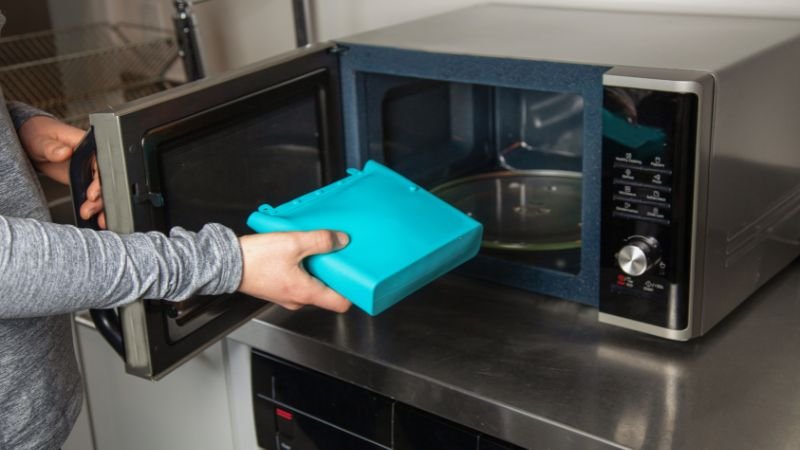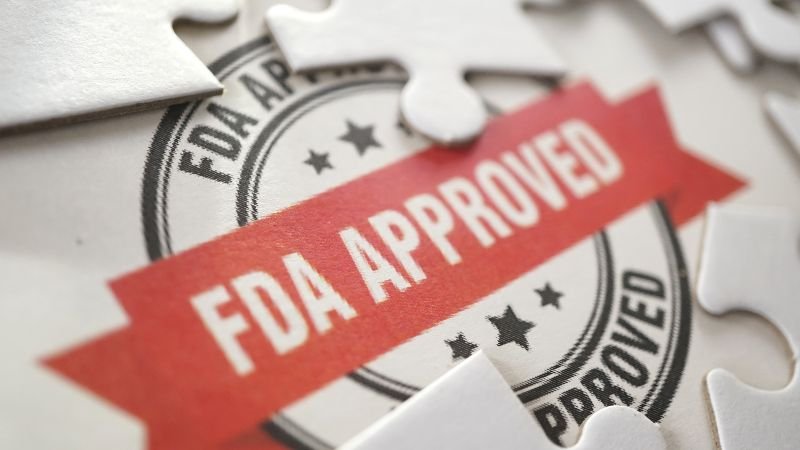Have you ever wondered about the safety of silicone molds when baking or freezing your favorite foods? This concern is not uncommon. The materials we use for food preparation are as important as the ingredients. Silicone molds have become increasingly popular, but questions linger about their safety and impact on our health.
Yes, food-grade silicone molds are safe for food. These molds are specifically designed to be non-toxic and free from harmful chemicals. They undergo stringent testing to meet food safety standards set by regulatory bodies, ensuring they are safe for cooking and baking.
Continuing to use materials without knowing their safety can be risky. Let’s delve into the facts.
What is Food-Grade Silicone?
Food-grade silicone is a special kind of silicone, tailored for safe use with foods. It’s made by combining silicon (a natural element) with elements like oxygen, carbon, and hydrogen, resulting in a flexible, rubber-like material. Ideal for cooking and baking, it’s resistant to bacteria, doesn’t corrode, and is hypoallergenic.
To be classified as food-grade, silicone must meet high safety standards. In the USA, this includes approval from the Food and Drug Administration (FDA). FDA approval ensures the silicone is free from harmful chemicals. Many food-grade silicone products also have NSF certification. This indicates they adhere to public health and safety standards.
Characteristics of Silicone Molds
Silicone molds are highly regarded for their exceptional versatility and durability across various temperature ranges. Let’s look at how they perform under different temperature conditions:
| Temperature Range | Versatility and Durability of Silicone Molds |
|---|---|
| Below Freezing (e.g., -40°F) | Silicone molds excel in freezing conditions. They maintain their flexibility and do not crack or become brittle, making them perfect for freezing liquids and semi-solids like ice cream or gelatin. |
| Room Temperature | Silicone molds remain stable and retain their shape. This makes them ideal for setting desserts like jellies or chocolates that need to solidify at room temperature. |
| Oven Heat (up to 500°F) | In the oven, silicone molds can safely withstand high temperatures, up to about 500°F. They’re great for baking without deforming or releasing any harmful substances. |
| Microwave Safe | Silicone molds can be used in the microwave safely. They don’t warp or degrade, even with microwave heating, ensuring consistent results. |
| Dishwasher Safe | The durability of silicone molds extends to dishwasher use. They can handle the high heat and water exposure in dishwashers, maintaining their shape and non-stick properties even after repeated cleaning cycles. |
Apart from their temperature resilience, silicone molds are also prized for their non-stick nature, which makes removing cakes and candies easy and reduces the need for greasing.

Their flexibility is another boon, allowing for easy storage and effortless removal of baked or frozen items.
Additionally, their non-reactive properties ensure that they don’t interact with food or impart any flavors or odors, preserving the taste and quality of your culinary creations.
Applications of Silicone Molds in the Kitchen
Silicone molds have become a go-to tool in modern kitchens due to their versatility in various cooking methods. This adaptability makes them an invaluable asset for both home cooks and professional chefs.
Use in Different Cooking Methods
One of the greatest advantages of silicone molds is their compatibility with a wide range of cooking appliances.
They are safe for use in microwaves, where they don’t warp or degrade, making quick heating or cooking tasks more efficient.
In ovens, these molds can withstand high temperatures, ideal for baking cakes or bread.
Silicone molds are also suitable for air fryers, a popular kitchen gadget for healthier cooking options. Their ability to endure the air fryer’s intense heat and circulating air makes them perfect for creating crispy and evenly cooked dishes.
Diverse Culinary Applications
Silicone molds are not just limited to baking. They are incredibly versatile, finding applications across a spectrum of culinary tasks:
- Baking: Perfect for cakes, muffins, and bread, silicone molds ensure even baking and easy release without the need for greasing.
- Candy Making: Silicone’s non-stick surface is ideal for intricate candy or chocolate shapes, as it allows for a smooth release without breaking the delicate designs.
- Ice Cubes and Frozen Desserts: Their resistance to low temperatures makes silicone molds great for crafting unique ice cube shapes or freezing mousses and ice creams.
- Meal Prepping and Portion Control: They are useful for portioning meals or snacks, ensuring consistent sizes for meal prep.
The applications of silicone molds in the kitchen are as varied as the imagination of the cook using them. Their ease of use, combined with the safety and versatility they offer, makes them an essential part of modern culinary practices.
Safety of Silicone in Cooking and Baking
The safety of materials we use for cooking and baking is crucial. Silicone, used in kitchen molds, has passed stringent safety tests and meets important standards.
FDA Standards for Silicone Products Silicone kitchenware must meet the U.S. Food and Drug Administration (FDA) regulations. This means it’s tested thoroughly to ensure it’s free from harmful substances.
An FDA-approved silicone mold is safe for food contact and doesn’t pose health risks under normal use. This FDA approval is key for trusting silicone in our kitchens.
Withstanding Extreme Temperatures This ability to withstand different temperatures not only makes silicone molds versatile but also safe for cooking and baking. Knowing that these molds won’t degrade or become harmful in varying cooking conditions is a big reason for their popularity in both home and professional kitchens.
Identifying Food-Safe Silicone Products

Not all silicone molds are created equal. Knowing how to distinguish food-safe products is key to ensuring the health and safety of your cooking. To verify if a silicone mold is safe for food, there are a few things to look for:
- “Food Grade” Labeling: Products intended for food use should be clearly labeled as “food grade.” This label indicates that the silicone has been specifically designed and tested for safe contact with food.
- FDA Approval: Look for products that mention FDA approval. This means the silicone has been tested and complies with the FDA’s standards for food safety.
- Absence of Fillers: A simple test to check for fillers in silicone is to pinch and twist a flat surface of the product. Pure silicone should not change color. If you notice any white coloration, this may indicate the presence of fillers, which are not recommended for food use.
Precautions and Limitations
While silicone molds offer numerous benefits in the kitchen, it’s important to be aware of their precautions and limitations to ensure safe and effective use.
Flammability of Silicone
Silicone is highly resistant to heat, but it is not immune to the dangers of direct flame. Exposing silicone molds to an open flame or a stove burner can cause them to melt or catch fire.
This is because, despite their high heat tolerance, silicone materials are not designed to withstand the direct and intense heat of a flame.
Therefore, it’s crucial to avoid using silicone molds on gas stoves, open grills, or any cooking method that involves direct exposure to flames.
Temperature Limitations
Silicone molds have specific temperature thresholds, which vary depending on the quality and make of the product.
Generally, most high-quality silicone molds can withstand temperatures from as low as -40°F up to about 500°F. However, it’s important to check the specific temperature range recommended by the manufacturer.
Exceeding these temperature limits can lead to degradation of the silicone material, potentially causing it to warp, melt, or even release chemicals into the food.
For instance, using a silicone mold intended for freezing in a high-heat oven could result in damage to both the mold and the food.
Maintenance and Cleaning
To maintain silicone molds, hand wash them or use a dishwasher, avoiding abrasive cleaners. Regular inspection for wear and tear is essential. Store them in a cool, dry place and dry thoroughly after cleaning to prevent mildew or mold growth.
If you have interest, click here to learn how to maintain and clean silicone molds in details.
Conclusion
In summary, silicone molds have proven to be a safe and versatile option for food preparation. Their resilience to a wide range of temperatures, from freezing cold to oven heat, along with their non-stick and flexible properties, make them an invaluable tool in any kitchen.
With the assurance of FDA standards and food-grade certification, these molds offer a reliable solution for various culinary needs, from baking and candy making to freezing and portion control.
However, it’s crucial to use silicone products responsibly. This means choosing FDA-approved, food-grade silicone, adhering to temperature guidelines, and avoiding direct exposure to open flames. Proper maintenance and cleaning are also key to ensuring the longevity and hygiene of these kitchen tools.